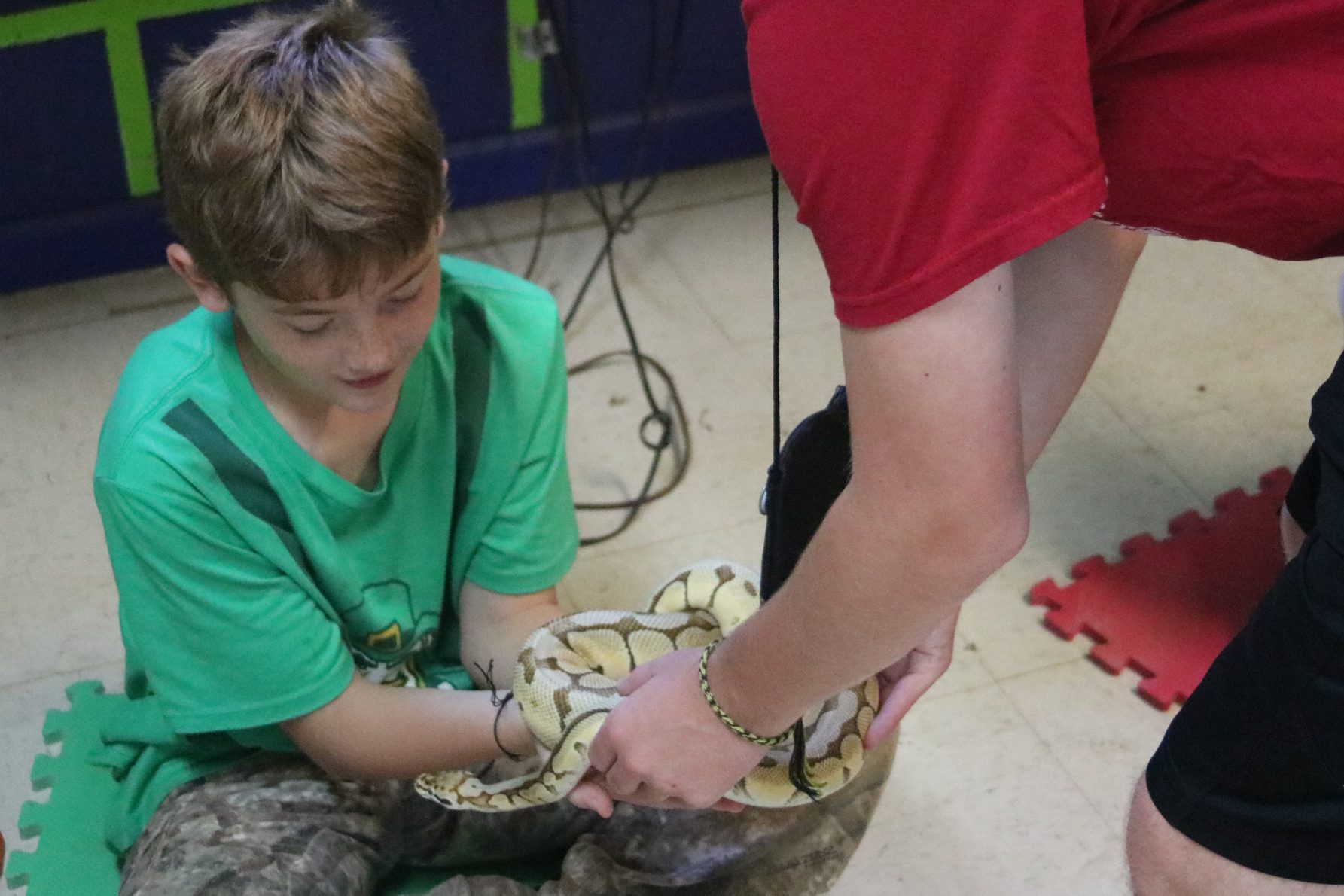Ball Python
Python regius
Ball pythons are one of the easiest snakes to care for. They are extremely docile in nature and are named for their tendency to just curl into a ball with their head in the center. Sometimes they are called royal pythons because royalty had used them for fashion (again because of their calmness). They can be found in West and Central Africa, mainly in the savannah grasslands or open forests. These snakes are generally grown overall with unique patterns made by lighter brown circles; their belly is all white. Because of their high popularity as pets, they have been bred into special morphs to be specific colors or patterns. Due to this, they come in a huge variety. They can be brown, yellow, white, orange, pink, albino, and more. Morphs are named for their specific scale color and patterns, and eye color. While they look cool, it is good to keep in mind that intense breeding of animals can create health problems for the animals (just like with dogs and cats).
Like many reptiles, Ball Python hatchlings are born independent. This means they do not need their parents help and will go off on their own immediately after leaving the nest. In the wild, they have an average lifespan of 10 years, whereas in captivity it is around 20 years, but has been reported to be up to 50 years.
Say Hello To Cub Creek's Pythons: Seth, Seamus, Sorcha, O'Mally, Apollo, and Bumble
Seth, Seamus, and Sorcha are our oldest ball pythons (and the oldest animals at camp!). Despite what you would think, Seth and Seamus are our females while Sorcha is a male. They are all very used to being handled due to being at camp for nearly as long as this camp has been running. They all live together in the Reptile Room and enjoy hanging out together in their hides or all trying to share a water bowl (and spilling most of the water out). We got O’Mally in April of 2014, which is the same year he was born! He lives in his own enclosure. Apollo is a pastave morph (a mix of Mojave and Pastel), meaning he is light in color and has one dark spot within the patterns on his side. He lives with Bumble, another morph. Bumble is a killer bee morph ball python. Instead of the large dark spots found on standard ball python, she has thin stripes on her yellow body. To create this morph, you need to breed in the spider morph, which is known for its neurological problems (that’s why you’ll see Bumble doing acrobatics sometimes!).

Ball Pythons are native to central Africa, ranging across Sengal to Uganda.
HABITAT -The open forests or grasslands of Western and Central Africa.
DIET -Feed mainly on rodents, especially pest rats and mice.
FUN FACT -They likely use UV light coming from scent trails to track their prey.
SOCIAL BEHAVIOR -Generally solitary in the wild, but very docile with humans.
ACTIVITY -Being crepuscular, they are most active at dawn and dusk.
PREDATORS -Main predators of ball pythons are black cobras, birds of prey, carnivorous mammals, and humans.
SIZE -Can be 3-6 ft in length and usually less than 5 inches in circumference.
RELATIVES -The genus Python includes species such as the reticulated python.
CONSERVATION - Ball pythons are listed as Least Concern under the IUCN.
Cub Creek Animal Care Information
Housing - Our snakes are housed in our Reptile room, which also features many of our lizards. They live in large heat and UV light-controlled enclosures. Fresh water and plenty of places to hide and explore are provided for them.
Diet - Once a week, our snakes are fed frozen mice that are tailored to the snake’s size. Snakes have very slow metabolisms, so they do not need to be fed often to receive all of their necessary nutrients.
Enrichment - Reptiles do not need a lot of enrichment beyond their various hides. Our campers give them plenty of stimulation by handling them and even occasionally bringing them outside on warmer days in the summer.


